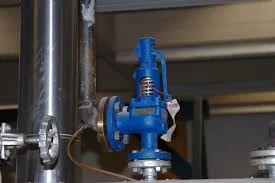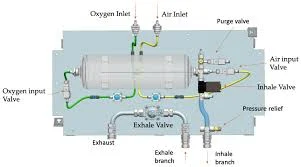Definition: Valve sizing refers to the process of selecting the correct size valve for a specific application. This ensures the valve can handle the desired flow rate of the fluid while maintaining optimal pressure conditions within the system.
Click the Translate button(see right) on this post to set your Own Language to understand more perfectly!!
Valve Cv Calculator
Result:
Valve Cv, or flow coefficient, is a measure of the flow capacity of a valve. It represents the rate of flow of water at 60°F (15.6°C) in gallons per minute (GPM) at a pressure drop of 1 psi across the valve.
Continue Definition:
Valve Sizing
Valve sizing refers to the process of selecting the correct size valve for a specific application. This ensures the valve can handle the desired flow rate of the fluid while maintaining optimal pressure conditions within the system.
Key Properties for Valve Sizing:
Flow Rate (Q): This is the volume of fluid that needs to pass through the valve per unit time. It's typically measured in gallons per minute (GPM) for liquids or cubic feet per minute (CFM) for gases.
Pressure Drop (ΔP): This is the difference in pressure between the upstream and downstream sides of the valve. It's crucial to consider the allowable pressure drop within the system.
Fluid Properties: The type of fluid (liquid, gas, etc.) and its properties like density and viscosity affect how the fluid flows through the valve.
Valve Type: Different valve designs (globe, butterfly, ball, etc.) have varying flow characteristics that impact sizing.
Required Equation:
The most common equation used for valve sizing involves the Flow Coefficient (Cv). The Cv rating represents the amount of water (in US gallons) that can flow through a fully open valve per minute with a pressure drop of 1 psi (pound per square inch).
Here's the basic formula:
Cv = Q / √ΔP / ρ
Where:
Cv = Flow Coefficient,
Q = Flow Rate (GPM),
ΔP = Pressure Drop (psi),
ρ = Fluid Density (lb/ft^3)
Example:
Let's say you need to size a valve for a water line carrying 20 GPM at a pressure drop of 5 psi. The fluid density of water is approximately 62.4 lb/ft^3.
Calculate Cv:
Cv = 20 GPM / √5 psi / 62.4 lb/ft^3 ≈ 5.6
Select Valve Size:
Based on the calculated Cv, you'll consult manufacturer data sheets for valves with a Cv rating greater than or equal to 5.6. This ensures the valve can handle the required flow rate without excessive pressure loss.
Special Note: This is a simplified example. Actual valve sizing often involves additional factors like cavitation, noise control, and future expansion needs. It's recommended to consult with valve sizing software or an engineer for complex applications.
Utilizing valve sizing calculations can open up several opportunities for individuals and businesses to generate revenue:
1. **Valve Manufacturing and Sales**: Companies involved in valve manufacturing can leverage valve sizing calculations o design and produce valves tailored to specific flow requirements. By offering a wide range of valve sizes and configurations, they can cater to various industries such as oil and gas, chemical processing, water treatment, and HVAC. Revenue can be generated through the sale of valves, valve components, and customized solutions.
2. **Valve Distribution and Supply**: Distributors and suppliers of valves can utilize valve sizing calculations to source and distribute valves from manufacturers to meet the needs of their customers. By providing expertise in valve selection and application, they can offer value-added services to industries such as construction, industrial maintenance, and facilities management. Revenue can be earned through valve sales, distribution agreements, and aftermarket support services.
3. **Valve Installation and Maintenance Services**: Contractors and service providers specializing in valve installation, commissioning, and maintenance can use valve sizing calculations to ensure proper valve selection and performance. By offering services such as valve installation, testing, calibration, and preventive maintenance, they can help industrial facilities, commercial buildings, and municipal utilities optimize their valve systems for efficiency and reliability. Revenue can be generated through service contracts, project fees, and spare parts sales.
4. **Engineering Consulting**: Engineering firms and consultants can leverage valve sizing calculations to provide consulting services for process design and optimization. By analyzing fluid flow requirements, pressure drop considerations, and system constraints, they can offer recommendations for valve selection, sizing, and placement. Revenue can be earned through consulting fees, engineering design services, and project management contracts.
5. **Energy Management Solutions**: Companies specializing in energy management and efficiency solutions can utilize valve sizing calculations to optimize energy consumption in fluid handling systems. By assessing valve performance, control strategies, and system efficiency, they can identify opportunities for energy savings and cost reduction. Revenue can be generated through energy audits, efficiency improvement projects, and performance-based contracts.
6. **Training and Education**: Educational institutions and training providers can develop courses, workshops, and certification programs on valve sizing, selection, and application. By incorporating valve sizing calculations into their curriculum, they can offer learning opportunities to students, professionals, and industry practitioners. Revenue can be earned through course fees, workshop registrations, and educational materials sales.
7. **Software Development**: Developers can create software applications and tools for performing valve sizing calculations and analysis. These software solutions can offer features such as data input, calculation algorithms, graphical visualization, and reporting capabilities, catering to the needs of engineers, designers, and maintenance professionals. Revenue can be generated through software sales, subscriptions, and licensing fees.
Overall, the ability to perform valve sizing calculations provides numerous opportunities for individuals and businesses to offer products and services across various industries, including manufacturing, distribution, construction, engineering consulting, energy management, education, and software development.
Do YOU Want To Earn Money In Various Ways, Click The Link & Explore Your Field of Interest!!!


















:</b> This is the volume of fluid that needs to pass through the valve per unit time. It's typically measured in gallons per minute (GPM) for liquids or cubic feet per minute (CFM) for gases.</blockquote>
<blockquote><b>Pressure Drop (ΔP):</b> This is the difference in pressure between the upstream and downstream sides of the valve. It's crucial to consider the allowable pressure drop within the system.</blockquote>
<blockquote> <b>Fluid Properties:</b> The type of fluid (liquid, gas, etc.) and its properties like density and viscosity affect how the fluid flows through the valve.</blockquote>
<blockquote><b>Valve Type: </b>Different valve designs (globe, butterfly, ball, etc.) have varying flow characteristics that impact sizing.</blockquote>
<blockquote><b>Required Equation:</b></blockquote>
<blockquote>The most common equation used for valve sizing involves the Flow Coefficient (Cv). The Cv rating represents the amount of water (in US gallons) that can flow through a fully open valve per minute with a pressure drop of 1 psi (pound per square inch).</blockquote>
<blockquote><b>Here's the basic formula:</b></blockquote>
<blockquote><b>Cv = Q / √ΔP / ρ</b></blockquote>
<blockquote>Where:</blockquote>
<blockquote><b>Cv = Flow Coefficient</b></blockquote> , <blockquote> <b>Q = Flow Rate (GPM)</b></blockquote>, <blockquote>ΔP = Pressure Drop (psi)</blockquote> ,<blockquote><b>ρ = Fluid Density (lb/ft^3)</b></blockquote>
<blockquote>Example:</blockquote>
<blockquote>Let's say you need to size a valve for a water line carrying 20 GPM at a pressure drop of 5 psi. The fluid density of water is approximately 62.4 lb/ft^3.</blockquote>
<blockquote>Calculate Cv:</blockquote>
<blockquote>Cv = 20 GPM / √5 psi / 62.4 lb/ft^3 ≈ 5.6</blockquote>
<blockquote>Select Valve Size:</blockquote>
<blockquote>Based on the calculated Cv, you'll consult manufacturer data sheets for valves with a Cv rating greater than or equal to 5.6. This ensures the valve can handle the required flow rate without excessive pressure loss.</blockquote>
<blockquote>Special Note: This is a simplified example. Actual valve sizing often involves additional factors like cavitation, noise control, and future expansion needs. It's recommended to consult with valve sizing software or an engineer for complex applications.
</blockquote>
<div class=)














